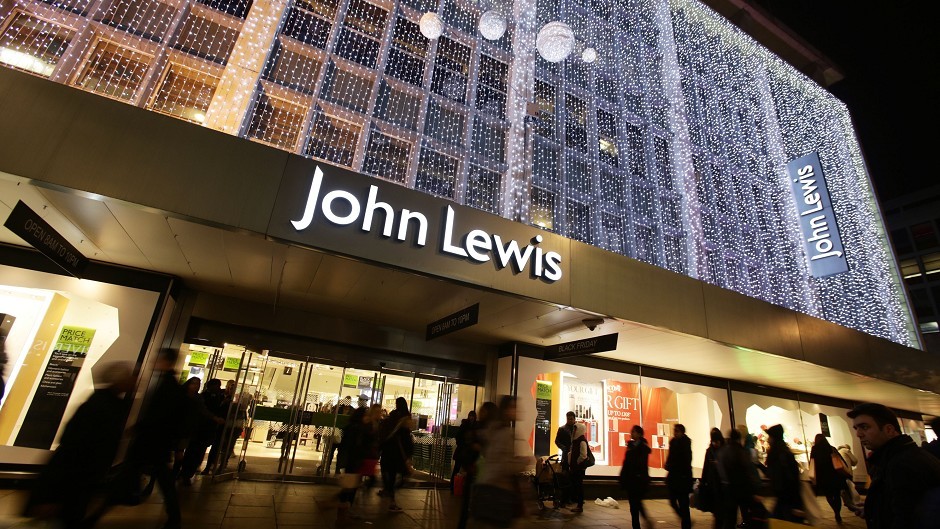Investments in IT drove the employee-owned company that runs retailers John Lewis and Waitrose to an increase in sales over the Christmas period.
John Lewis Partnership (JLP) said it had notched up sales of £1.8billion in the six weeks to January 2, up 4.1% year-on-year.
At John Lewis, which witnessed a “significant shift” in trading patterns, sales declined slightly at its physical stores due to a drop in footfall pre-Christmas.
But overall takings for the brand climbed 6.9% on the back of strong online sales, which went up by a fifth, with use of mobile applications growing fastest.
The chain’s three product areas – home, fashion and technology – all enjoyed single digit growth.
Waitrose gross sales, excluding fuel, were up 1.2% on last year, with the peak in trading coming particularly late this year.
The supermarket said it did more business than usual in the days before Christmas − chalking up record trading days for December 23 and 24.
JLP chairman Sir Charlie Mayfield said: “This has been a strong Christmas trading period for the partnership despite the non-food market seeing significant shifts in trade patterns and the grocery market continuing to be challenging.
“Our performance reflects to a large extent the significant investment we have made in our distribution and IT capability. Despite the fact trade was even more concentrated across a number of very busy shopping days, our operations performed especially well.”
The partnership, which operates 46 John Lewis stores and 346 Waitrose outlets across the UK, kept its full year profits guidance at between £270million and £320million, against £342.7million last year.
Clive Black, director of research at Shore Capital, said Christmas 2015 was a “breakthrough year” for non-food online participation in the UK.
Mr Black also expects the “late-Christmas sales” rush reported by Waitrose to be experienced at other supermarket groups.
He said: “We would imagine that Waitrose’s experience will be mirrored by the rest of the grocery trade. We believe that Sainsbury’s, which has captured the headlines with its approach for Home Retail Group, may beat Waitrose’s life-for-like sales performance, as may Marks & Spencer food.”
JLP, an employer of about 90,000 people, achieved its results amid falling food and non-food prices.
In December, overall UK shop prices dropped 2%, according to the British Retail Consortium (BRC), which expects deflation to continue.
BRC chief executive Helen Dickinson, said: “For the last two years and eight months, customers have been able to fill their baskets, whether virtual or physical, and pay less for their goods than the year before.
“This is an incredible run of good fortune for shoppers who’ve been preoccupied with picking up presents for family and friends, as well as themselves ahead of the holiday season.
“With retailers continuing to invest in price, relatively low commodity prices and intense competition a hallmark of the industry, we can expect falling prices to continue in the medium term.”
